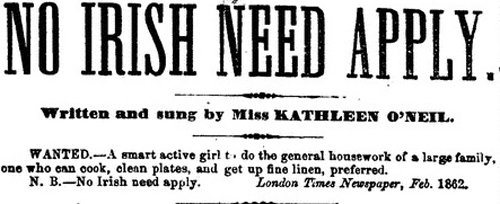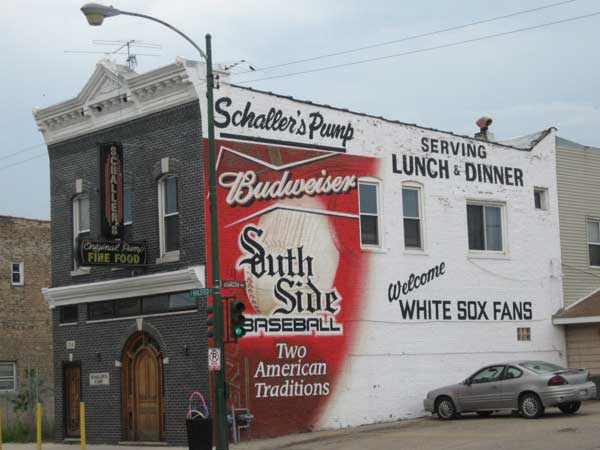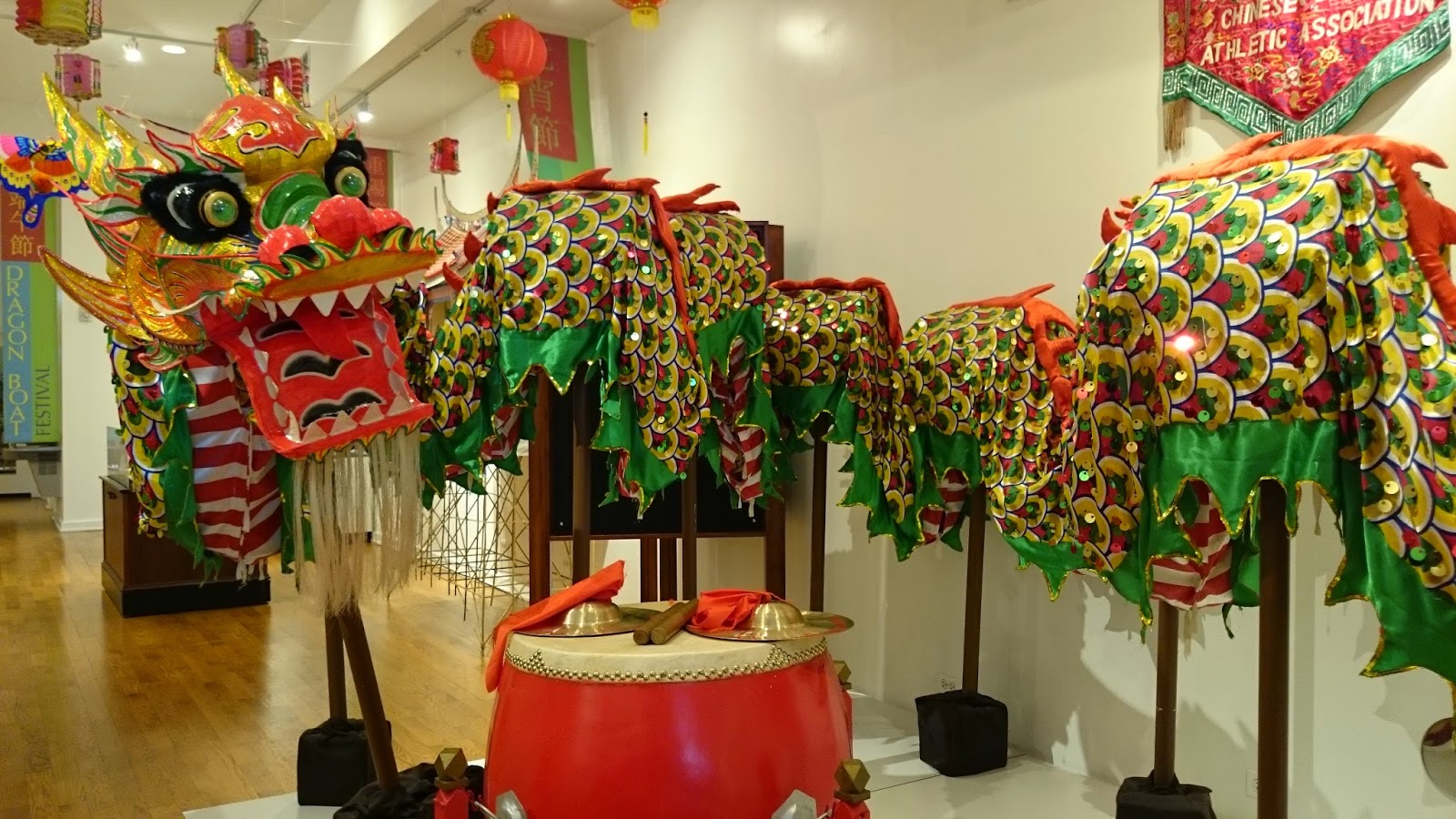Immigration is the action of coming to live permanently in a country. Immigration started a long time ago. Immigration to the United States started in the early-mid 1800's and then in the late 1800' and early 1900's. First the Europeans started to migrate to the United States, following them people from other countries started to come to the United States as well because there were a lot of employment opportunities in the country. Right now there are bout 38.5 million immigrants living in the United States which means one out of every eight Americans is an immigrant. In the state of Illinois there are about 1.74 million immigrants of which 588,000 live in Chicago, 33.8% of the state total (US Census Bureau 2009 American Community Survey, Table B05002).
The first immigrants that arrived to the US were the French. Following the 1848 revolutions that swept through Europe the French immigrants were political refugees who left France (American Experience, n.d.). Following the French came the Scottish people in the 1850's. Scottish immigrants founded the Illinois Saint Andrew Society in 1845 to help Scottish immigrants adjust to the new environment (American Experience, n.d.). It was the first organization of this type founded in Chicago. Then Norwegians entered the America next to join the labor force where there were more opportunities than in their homeland. It was easy for them to get accustomed here because they knew English. They had a protestant work ethic which is work hard and be successful. They maintained their individuality, right to democracy. Norwegians helped establish Logan Square neighborhood, which now houses a large Latino population (American Experience, n.d.). These were the "old" immigrants and they moved to the west in the later times.
The "new" immigration started with the Irish. The Irish started to migrate since the 1830's they weren't a huge population until the 1860's because that is the time when they really started to come in and their population doubled from the 1830's (Irish, n.d.). Due to their dark skin they were discriminated a lot. But the Irish immigrants were a huge part of the labor force which worked in making the Illinois Michigan Canal (1836-1848). The Irish settled in a neighborhood called Canalport which was later known as Bridgeport and was the home to five 20th century Chicago mayors (American Experience, n.d.). The Irish were famous for drinking beer, consequently the oldest bar in Chicago is an Irish bar. At first the Irish were all separated but later they assimilated together to counter the discrimination towards them.
The Polish immigration to Chicago started from the 1850's and lasted till the early 1920's (Poles, n.d). Although there were a lot of Polish people coming to Chicago they did not really integrate as there were 5 different Polish neighborhoods in the city of Chicago. The Polish were the first among the immigrants who had the interest of owning properties. They bought lands or property instead of just renting and living there. The main Polish settlement was along the North Branch of the Chicago River. In 1867 the Polish community created its own Roman Catholic parish, St. Stanislaus Kostka, which was the first of about 60 parishes in the archdiocese (Poles, n.d.). The Polish people also started banking among the associations, they also established a burial society. As funerals were very costly the burial society would collect money and provide money to people for completing funerals. The Poles built orphanages, old age homes and a few Catholic Churches. But since they isolated themselves and had no political power or investment, they could not progress much and failed to have very high upper class. Nowadays the Archer Heights neighborhood maintains a strong Polish presence (American Experience, n.d.).
The first Chinese immigrants to Chicago arrived in the early 1870's (Chinese, n.d.). The Chinese first settled in California but after the construction of the railroad they started to migrate to Chicago, New York, and Boston. The population started to grow steadily and reached to about 2,353 in 1920 from 172 in 1880 (Chinese, n.d.). Due to the U.S. immigration policies and anti-Chinese attitude the immigrants from China were not welcomed in the U.S. There was a Chinese Exclusion Law in 1882, which made a lot of Chinese leave the country and there was much imbalance in the demography as there were merely 6% female of the total Chinese population in Chicago (Chinese, n.d.). The Chinese immigrants had a very rough time coming into a new country. Despite all the difficulties the Chinese in Chicago built a community in Chinatown and established some organizations for their support. After World War II the Chinese exclusion act ended and a lot more Chinese immigrants started to arrive in the U.S. The Chinese established a lot of family organizations.
Italians began to come to Chicago in small numbers in the 1850's working as merchants, vendors, barbers etc and by 1880 there were about 1,357 Italians in the city (Italians, n.d.). The first thinking of the Italians was to make money and go home, "sojourner" they were called. They wanted to work outdoors not confined to mills and factories. They became construction workers or became fruit, vegetable vendors. They had a tough time competing with the Greeks as they were also fruit and vegetable vendors. The Italians that came were mainly farmers and merchants and they did not stay long enough to gain any political success. As most of them left the remaining ones formed the largest ethnic group in the Near West Side neighborhoods by the 1920's (American Experience, n.d.). The area around Taylor Street is Chicago's Little Italy.
The formation of the Austrian-Hungarian Empire in 1867 sparked an exodus from that region and Czechs from Bohemia entered Chicago in the following decades (American Experience, n.d.). They settled in the Lower West neighborhood called Pilsen, the name originates from a Bohemian capital best known for Pilsner beer. The Czechs were the 2nd most literate immigrant group with about 98% literacy rate. Unlike other immigrant groups they collaborated and integrated as a result they became successful. Since they were educated they gained a lot of political power by representing about 80 public officials in 40 years. The Czechs built a lot of immigrant institutions like savings and loan associations, gymnastics societies, fraternal organizations which became established and some of them are still running (Czechs and Bohemians, n.d.).
Jews came to Chicago from virtually every country in Europe and Middle East, but especially from Germany and Eastern Europe. Chicago's first permanent Jewish settlers arrived in 1841 from Central Europe, largely from Germany (Jews, n.d.). The Jewish immigrants were separate from other people coming from their own country. The Jewish Irish or Polish or Italians were separate from the other immigrants from their country. The Jews were discriminated in their native countries and the only safe place they could find was the US. They settled in one of the poorest parts of the city, the Maxwell Street area on the Near Westside. They mainly benefited from the free education provided by the government. Education and entrepreneurship provided many Jews with the route out of Maxwell Street as some moved to the South Side; some moved into the North lakefront communities of Lake View, Uptown and Rogers Park; more headed northwest into Humboldt Park, Logan Square and Albany Park. The largest number moved west into the North Lawndale area, which became the largest Jewish community in the history of Chicago by 1930's (Jews, n.d.).
Assimilation is a process in which formerly distinct and separate groups come to share a common culture and merge together and Pluralism, on the other hand, exists when groups maintain their individual identities (Assimilation and Pluralism, n.d.). Both Assmililation and pluralism are important for immigrants who come to a new place. Although there were many different immigrant groups arriving to Chicago not all immigrant groups assimilated or integrated. Some became more successful than others as a result of their experience, hard work and opportunities provided to them. The immigrants have a major impact in the city in various aspects. In 2005 Illinois launched the nation's first statewide effort to integrate immigrants, putting outreach workers in ethnic groups to help with citizenship applications and voter registration (Immigrant Chicago, n.d.). Overall Chicago is an immigrant friendly city and if you are an immigrant looking for a place to settle I would highly recommend Chicago!
References:
 |
| Table Showing Immigrants |
 |
| http://www.chicagoloopster.com/wordpress/wp-content/uploads/2011/01/immigration_chart1.jpg |
The first immigrants that arrived to the US were the French. Following the 1848 revolutions that swept through Europe the French immigrants were political refugees who left France (American Experience, n.d.). Following the French came the Scottish people in the 1850's. Scottish immigrants founded the Illinois Saint Andrew Society in 1845 to help Scottish immigrants adjust to the new environment (American Experience, n.d.). It was the first organization of this type founded in Chicago. Then Norwegians entered the America next to join the labor force where there were more opportunities than in their homeland. It was easy for them to get accustomed here because they knew English. They had a protestant work ethic which is work hard and be successful. They maintained their individuality, right to democracy. Norwegians helped establish Logan Square neighborhood, which now houses a large Latino population (American Experience, n.d.). These were the "old" immigrants and they moved to the west in the later times.
The "new" immigration started with the Irish. The Irish started to migrate since the 1830's they weren't a huge population until the 1860's because that is the time when they really started to come in and their population doubled from the 1830's (Irish, n.d.). Due to their dark skin they were discriminated a lot. But the Irish immigrants were a huge part of the labor force which worked in making the Illinois Michigan Canal (1836-1848). The Irish settled in a neighborhood called Canalport which was later known as Bridgeport and was the home to five 20th century Chicago mayors (American Experience, n.d.). The Irish were famous for drinking beer, consequently the oldest bar in Chicago is an Irish bar. At first the Irish were all separated but later they assimilated together to counter the discrimination towards them.
 |
| http://www.substancenews.net/assets/images2/1055932816.jpg |
 |
| http://www.realestateprochicago.com/wp-content/uploads/2013/02/Polish-Avondales-Polish-Village-200x300.jpg |
 |
| Oldest Bar in Chicago http://www.angelfire.com/ex2/thenovakids/news/2006/schallers_pump.jpg |
The first Chinese immigrants to Chicago arrived in the early 1870's (Chinese, n.d.). The Chinese first settled in California but after the construction of the railroad they started to migrate to Chicago, New York, and Boston. The population started to grow steadily and reached to about 2,353 in 1920 from 172 in 1880 (Chinese, n.d.). Due to the U.S. immigration policies and anti-Chinese attitude the immigrants from China were not welcomed in the U.S. There was a Chinese Exclusion Law in 1882, which made a lot of Chinese leave the country and there was much imbalance in the demography as there were merely 6% female of the total Chinese population in Chicago (Chinese, n.d.). The Chinese immigrants had a very rough time coming into a new country. Despite all the difficulties the Chinese in Chicago built a community in Chinatown and established some organizations for their support. After World War II the Chinese exclusion act ended and a lot more Chinese immigrants started to arrive in the U.S. The Chinese established a lot of family organizations.
 |
| Chinatown Gate, Chicago |
 |
| Traditional Chinese Dragon |
Italians began to come to Chicago in small numbers in the 1850's working as merchants, vendors, barbers etc and by 1880 there were about 1,357 Italians in the city (Italians, n.d.). The first thinking of the Italians was to make money and go home, "sojourner" they were called. They wanted to work outdoors not confined to mills and factories. They became construction workers or became fruit, vegetable vendors. They had a tough time competing with the Greeks as they were also fruit and vegetable vendors. The Italians that came were mainly farmers and merchants and they did not stay long enough to gain any political success. As most of them left the remaining ones formed the largest ethnic group in the Near West Side neighborhoods by the 1920's (American Experience, n.d.). The area around Taylor Street is Chicago's Little Italy.
 |
| http://images.chicagotraveler.com/images/general-chicago/18-3-littleitaly.jpg |
The formation of the Austrian-Hungarian Empire in 1867 sparked an exodus from that region and Czechs from Bohemia entered Chicago in the following decades (American Experience, n.d.). They settled in the Lower West neighborhood called Pilsen, the name originates from a Bohemian capital best known for Pilsner beer. The Czechs were the 2nd most literate immigrant group with about 98% literacy rate. Unlike other immigrant groups they collaborated and integrated as a result they became successful. Since they were educated they gained a lot of political power by representing about 80 public officials in 40 years. The Czechs built a lot of immigrant institutions like savings and loan associations, gymnastics societies, fraternal organizations which became established and some of them are still running (Czechs and Bohemians, n.d.).
 |
| http://media.timeout.com/images/100920059/617/347/image.jpg |
Jews came to Chicago from virtually every country in Europe and Middle East, but especially from Germany and Eastern Europe. Chicago's first permanent Jewish settlers arrived in 1841 from Central Europe, largely from Germany (Jews, n.d.). The Jewish immigrants were separate from other people coming from their own country. The Jewish Irish or Polish or Italians were separate from the other immigrants from their country. The Jews were discriminated in their native countries and the only safe place they could find was the US. They settled in one of the poorest parts of the city, the Maxwell Street area on the Near Westside. They mainly benefited from the free education provided by the government. Education and entrepreneurship provided many Jews with the route out of Maxwell Street as some moved to the South Side; some moved into the North lakefront communities of Lake View, Uptown and Rogers Park; more headed northwest into Humboldt Park, Logan Square and Albany Park. The largest number moved west into the North Lawndale area, which became the largest Jewish community in the history of Chicago by 1930's (Jews, n.d.).
 |
| http://www.danwymanbooks.com/images/GENE-1-40.jpg |
Assimilation is a process in which formerly distinct and separate groups come to share a common culture and merge together and Pluralism, on the other hand, exists when groups maintain their individual identities (Assimilation and Pluralism, n.d.). Both Assmililation and pluralism are important for immigrants who come to a new place. Although there were many different immigrant groups arriving to Chicago not all immigrant groups assimilated or integrated. Some became more successful than others as a result of their experience, hard work and opportunities provided to them. The immigrants have a major impact in the city in various aspects. In 2005 Illinois launched the nation's first statewide effort to integrate immigrants, putting outreach workers in ethnic groups to help with citizenship applications and voter registration (Immigrant Chicago, n.d.). Overall Chicago is an immigrant friendly city and if you are an immigrant looking for a place to settle I would highly recommend Chicago!
 |
| http://www.wenphotos.com/flash/teresawilsonesession/Colorful-downtown-chicago-and-pilsen-engagement-session-with-murals-06.jpg |
References:
Chicago's Immigrants Break
Old Patterns. (2003, September 1). Retrieved March 23, 2015, from http://www.migrationpolicy.org/article/chicagos-immigrants-break-old-patterns
Chinese. (n.d.). Retrieved March 25, 2015, from http://www.encyclopedia.chicagohistory.org/pages/285.html
Czechs and Bohemians. (n.d.). Retrieved March 25, 2015, from
http://www.encyclopedia.chicagohistory.org/pages/153.html
Immigrant Chicago: How
immigration shaped a city. : ChicagoStories.org — Resources for journalists
covering Chicago. (n.d.). Retrieved March 23, 2015, from http://chicagostories.org/immigrant-chicago/
Irish. (n.d.). Retrieved
March 23, 2015, from http://www.encyclopedia.chicagohistory.org/pages/652.html
Jews. (n.d.). Retrieved March 25, 2015, from http://www.encyclopedia.chicagohistory.org/pages/671.html
Poles. (n.d.). Retrieved March 25, 2015, from http://www.encyclopedia.chicagohistory.org/pages/982.html
US Census Bureau 2009 American Community Survey, Table
B05002. Place of Birth by Citizenship Status – Universe: Total Population
(n.d.). Retrieved March 23,
2015, from http://www.pbs.org/wgbh/amex/chicago/sfeature/sf_nations.html
No comments:
Post a Comment